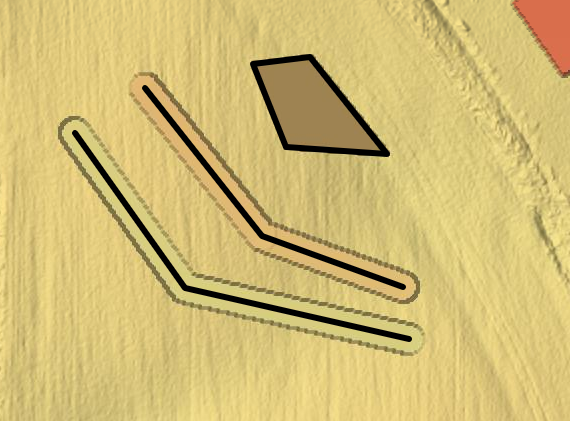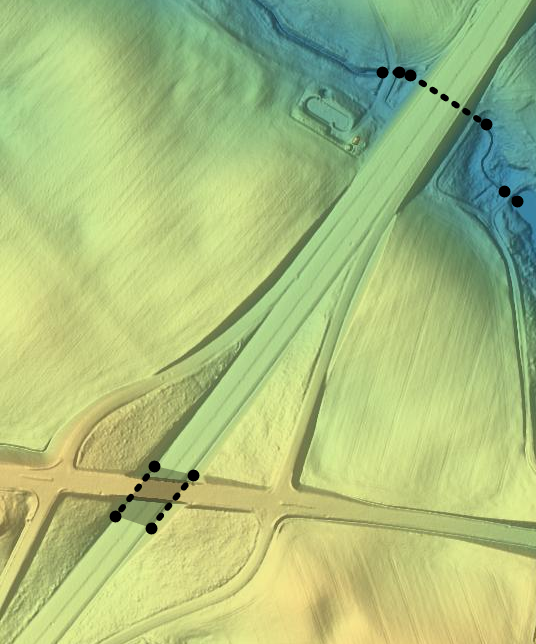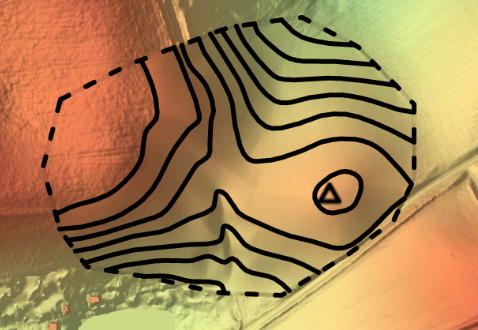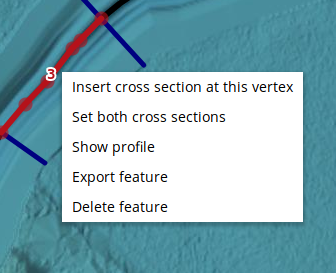-
Documentation
-
About
- Getting Started & Use Cases
- Support
-
What's New
- Simplified tools for designing with contour lines
- DynamicFlood: Organize and understand your computations
- Modelling stormwater networks in Scalgo Live
- National US high-resolution land cover map
- New functionality for CAD users!
- DynamicFlood: Cleaning up rain events and adding historical rains, now available in France
- National Polish high-resolution land cover map
- DynamicFlood now available in Great Britain
- Global contour maps now available
- Updated Swedish topsoil map
- Scalgo Live Global theme is updated with new elevation and land cover data
- Detailed culvert information in DynamicFlood
- No more Lantmäteriet fees for Swedish data
- Depth-dependent surface roughness (Manning) in DynamicFlood
- Detailed land cover map for all of Great Britain
- National French high-resolution land cover map
- Work with multiple features simultaneously in the canvas
- Spill points on flash flood map and depression map
- New surface roughness (Manning) parameters for DynamicFlood
- Workspace and Modelspace sharing updates
- Regionally varying rain in DynamicFlood Sweden
- Veden imeytyminen nyt osana rankkasadeanalyysejä
- Use Scalgo Live anywhere in the world
- DynamicFlood: Live model speed info and regionally-varying rain events
- Sea-level rise: Download building flooding information
- Detailed contour maps and editable buildings in Workspaces
- New in Modelspaces: Explore hydrodynamic simulations and visualise the dynamics of flow velocity
- National German high-resolution land cover map
- Specify basins and protrusions by drawing their outer boundary
- Simplified path features
- National Norwegian high-resolution land cover map
- Organise and communicate on a digital canvas
- New sidebar to help organize your analyses and queries
- Sliding contours
- Ny skyfallsanalys och en ännu bättre marktäckekarta
- New land cover map for Finland
- Depths in the depression map
- New Danish land cover map with more classes
- National Swedish High-Resolution Impervious Surface Mapping
- Watershed tool updated with even better descriptions of catchment characteristics
- National Flash Flood Map with Infiltration and Drainage for Denmark
- Add your own WMS layers to SCALGO Live
- Enriched building data in Denmark
- National hydrological corrections and Land Cover for Poland
- National hydrological corrections for Norway
- Updated Impervious Surface Mapping for Denmark
- National hydrological corrections and updated local data for Finland
- Fast and intuitive tools to work with infiltration and land use
- Improvements to vector imports and exports
- National Danish groundwater model
- New Sweden high-resolution model
- New powerful depression map and more analyses visualization options
- Introducing Modelspaces: Get your hydrodynamic models into SCALGO Live
- Use case videos
- Access a EA flood maps inside SCALGO Live
- Improved map export
- New powerful ways to edit the elevation model
- Better coloring of flooding layers and sea-level depth filtering
- National Danish High-Resolution Impervious Surface Mapping
- National access for local and regional organizations
- Simpler, more powerful downloads
- Customize Layer Transparency
- Hydrological corrections and new data in Sweden
- Improved export functionality
- Access a wide range of authorative data inside SCALGO Live
- Importing VASP data
- Measure gradients, undo edits, and Norway updates
- New terrain edit features, soil balance information and much more...
- Browse historical orthophotos in SCALGO Live
- Emergency planning with sea-level rise from national forecast data
- Detailed information about watershed composition
- Better styling of imported vector layers
- New Danish Elevation Model
- Work with gradients in the profile widget
- Flood risk screening from rivers and flow paths
- New workspace tool: Raise and lower terrain uniformly
- Importing LandXML TINs, LAS point clouds
- New model in Sweden
- Side slopes on workspace features
- Drag and drop enhancements
- Swedish contour maps
- Subsurface basins and sewage drains in workspaces
- New Interface
- Volume information for watersheds and flow paths
- New powerful tool for emergency response and coastal flood prevention
- Denmark: New flash flood map
- Sweden: Geodatasamverkan setting for Swedish users
- Import custom terrain models
- New Hydrological Corrections
- Elevation contours now available
- Download orthophotos as JPEG and PNG
- Subsurface structures in workspace
- Sea-levels in terrain profiles
- Updated orthophotos
- Models and analysis update
- User interface updates
- User interface updates
- GeoDanmark/FOT data, Matrikelkortet now available
- New flash flood map
- Download of risk polygons
- Updated orthophotos
- Nationwide hydrology on the new DHM/2015 model now available
- New flash flood map computation available with watershed download
- DHM/2015 variants and sea-levels now available nationwide
- DHM/2015 now available nationwide
- Hydrology on the new DHM/2015 model now available
- New DHM/2015 Model - now with buildings
- New DHM Model
- Watershed Tool
- Ad hoc layers
- Nationwide contour maps for all countries
- Single Sign-On
- Data Fees
- User Interface
- Canvas
- Analysis
- Workspaces
- Modelspaces
- Working with CAD data
- Core+ DynamicFlood
- Core+ NatureInsight
- Core+ PropertyResilience
- Streams and Flow
- Physical Properties
- Country Specific
-
About
Workspaces – Editing the Terrain
Workspaces let you change the terrain model and observe the effects on the analyses. You access these editing tool through the following steps:
- Select the toolbox icon
by the workspace you want to edit
- Select the Elevation tab
- Choose the editing tool you want to work with.
There are several different types of tools. Most of the the tools create terrain edit features that are used to modify the terrain or the resulting analyses, they are described in separate sections of this manual. The last tool allows you select existing features and modify them in several ways, that tool is described in this section.
The three categories of tools for creating new terrain edit features are:
Simple terrain tools
The simple terrain tools: Allows you to edit the terrain along paths and polygons. Despite the name they can be quite powerful.

Subsurface tools
The subsurface terrain tools allows you to subsurface basins and structures for routing and storing water without changing the elevation model.

Contour tools
The contour tools lets create and modify contours to sculpt the terrain to your needs.

Modifying features

You modify existing features using the select tool. It
lets you select any of the features in the
workspace. Once selected, the position of any vertex of a feature
can be changed interactively by dragging the vertex. New vertices
can be created by clicking anywhere on the feature boundary, while
vertices can be deleted by clicking on the vertex with the CTRL key held down. You can also move an entire feature by clicking and
dragging it in the interior of an area feature or by
holding the SHIFT key while clicking.
It is possible to select multiple features. When clicking while holding down CTRL you can toggle the selection of individual features and with SHIFT you can add multiple features to your current selection. When dragging while holding CTRL, you can create a box to select multiple features.
When selecting a feature, the path info dialog appears in the bottom right corner and enables you to:
- Change the feature's attributes,
such as the width of a path, the elevation of a contour, or a comment explaining the purpose of the feature.
- Access the profile tool, where you can fine-tune the elevation of each vertex of the feature - see below.
- Show you the area of an area feature.
- Change the edit method (only available for the simple tools):
- When the edit mode is raise & lower, the tool will raise or lower the current terrain elevation as necessary to create the feature. This is the default for the interpolate path tool.
- When the edit mode is set to only raise, the tool will never decrease any elevation value. In other words, it "adds" material to the terrain, never "removes" material. This is the default for the raise path and raise flat path or area tools
- When the edit mode is set to only lower, then the tool will never increase any elevation value. In other words, it "removes" material from the terrain, never "adds" material. This is the default for the lower path and lower flat path or area tools.
- When the edit mode is raise & lower, the tool will raise or lower the current terrain elevation as necessary to create the feature. This is the default for the interpolate path tool.
Depending on the type of feature selected some of the options above might not be available.
You can delete an entire feature by pressing delete in the path info dialog.
Once you have selected a feature, a context menu becomes available for this feature. Right-click on the selected feature to access the context menu. It provides some of the actions also available in the path info dialog, as well as actions to modify the cross sections of the feature - see below.
Undo and Redo

You can undo your modifications to the workspace one step at a time, using the green undo button. Once you have undone a modification, you can perform it again using the redo button below.
Only modifications that are less than one week old can be undone. The buttons are grayed out when no modification can be undone or redone.
The profile tool
The profile tool is used to modify the elevations of the vertices of a feature. You can use it in parallel with modifying the geometry of the path on the map (the profile tool updates itself whenever you move, insert, or delete a vertex of the path feature on the map). When you save your path modifications, the updated elevations are saved as well.
The feature context menu
Once you have selected a feature using the select tool, you can right-click it to bring up the feature's context menu:
